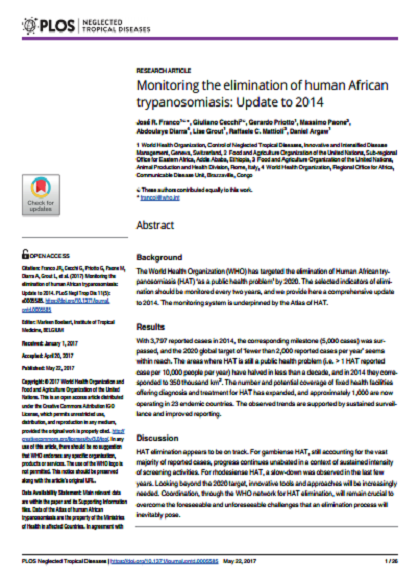
Monitoring the elimination of human African trypanosomiasis: Update to 2014
Number of pages: 26 p.
Publication date: May 2017
Languages: English
Overview
Human African trypanosomiasis (HAT), also known as sleeping sickness, is a neglected tropical disease transmitted by tsetse flies, which has been responsible for devastating epidemics in the 20th century. Since the last alarming spike in disease incidence during the late 1990s, disease surveillance and control have been greatly strengthened, tremendous improvements have been achieved, and the disease is now targeted for elimination by the World Health Organization (WHO).
In this paper we provide a comprehensive update of the indicators of HAT elimination to 2014, including number of reported cases and the areas and populations at risk. Fixed health facilities offering diagnosis and treatment for HAT were also surveyed, mapped, and their potential coverage of populations at risk was estimated. With 3,797 reported cases in 2014, the 2020 global target of ‘elimination as a public health problem’ (i.e. ‘fewer than 2,000 reported cases per year’) seems within reach. The 2030 target (i.e. elimination of transmission) is expected to pose more severe challenges. The sustained commitment of all stakeholders and close coordination of activities will have to be ensured, if the goal of HAT elimination is to be achieved.


